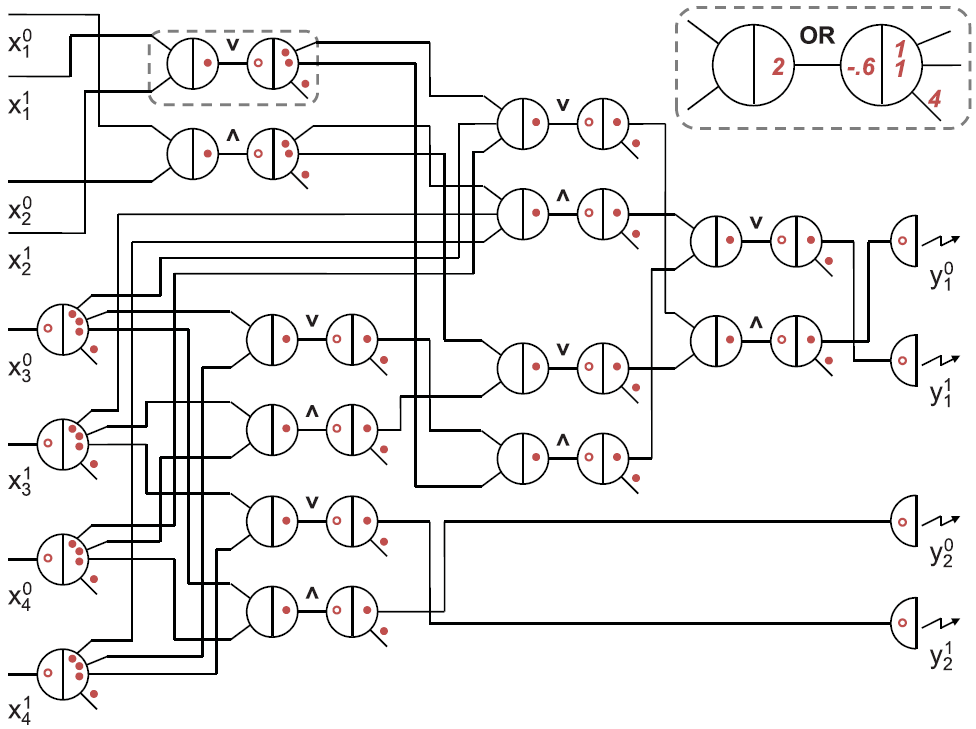Researchers build largest biochemical circuit out of small synthetic DNA molecules
June 3, 2011

Abstract diagram of a system of 130 DNA strands (the largest synthetic circuit of its type ever made). The circuit computes the square root of a number up to 15 and rounds down to the nearest integer (credit: Science/Caltech/Lulu Qian)
The most complex biochemical circuit ever created from scratch using DNA-based devices in a test tube has been built by researchers at the California Institute of Technology (Caltech).
To build their circuits, the researchers used pieces of DNA to make logic gates. Instead of depending on electrons flowing in and out of transistors, DNA-based logic gates receive and produce molecules as signals. The molecular signals travel from one specific gate to another, connecting the circuit as if they were wires.
The new logic gates are made from pieces of either short, single-stranded DNA or partially double-stranded DNA, in which single strands stick out like tails from the DNA’s double helix. The single-stranded DNA molecules act as input and output signals that interact with the partially double-stranded ones.
All the logic gates have identical structures with different sequences. As a result, they can be standardized, so that the same types of components can be wired together to make any type of circuit. They are also tunable, and can be adjusted by varying the concentrations of the types of DNA, the researchers said.
The design incorporates other crucial elements for large-scale circuitry, such as general debugging tools, parallel circuit preparation, and an abstraction hierarchy supported by an automated circuit compiler.
“Like Moore’s Law for silicon electronics, which says that computers are growing exponentially smaller and more powerful every year, molecular systems developed with DNA nanotechnology have been doubling in size roughly every three years,” says Erik Winfree.
Ref.: Lulu Qian, Erik Winfree, Scaling Up Digital Circuit Computation with DNA Strand Displacement Cascades, Science, 2011; 332 (6034): 1196-1201 [DOI: 10.1126/science.1200520]